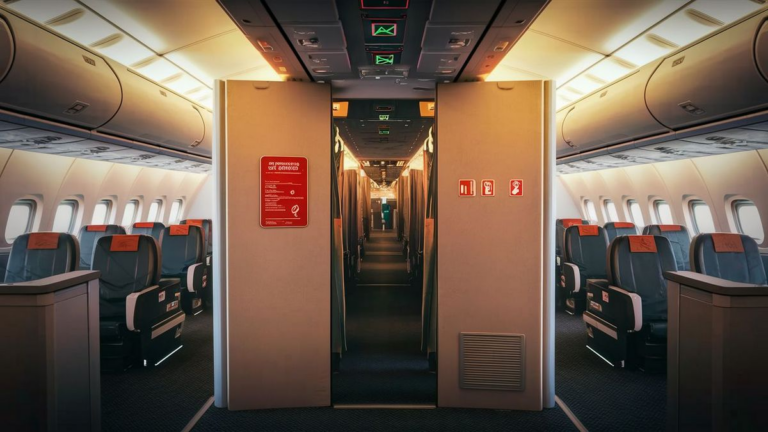When it comes to understanding the intricacies of aircraft design and cabin layout, the term “bulkhead” holds a significant place. In the aviation industry, a bulkhead is a crucial element that serves various purposes, ranging from safety to passenger comfort.
The Basics of a Bulkhead
Let’s start with the basics. A bulkhead on a plane refers to a partition or wall that separates different sections within the aircraft. These sections can include the cockpit, passenger cabin, galley, lavatories, and more. Bulkheads are typically made of lightweight but durable materials to ensure the overall structural integrity of the aircraft.
Types of Bulkheads
There are different types of bulkheads, each serving a specific function. The most common ones include:
- Structural Bulkheads: These are essential for maintaining the structural integrity of the aircraft. They provide support and stability to the airframe.
- Fireproof Bulkheads: In the interest of safety, certain bulkheads are designed to be fire-resistant, preventing the spread of flames in case of an emergency.
- Soundproof Bulkheads: To enhance the in-flight experience, airlines often incorporate soundproof bulkheads to minimize noise levels in passenger cabins.
Location and Purpose
The positioning of bulkheads within an aircraft is strategic and serves multiple purposes:
- Safety Barrier: In the event of sudden deceleration or impact, bulkheads act as a safety barrier, protecting passengers and crew from potential harm.
- Seating Arrangement: Airlines use bulkheads to define seating arrangements, separating different classes or creating distinct zones within the cabin.
- Galley and Lavatory Separation: Bulkheads also play a role in segregating the galley and lavatory areas from passenger seating, maintaining hygiene and convenience.
Passenger Benefits
While bulkheads have practical applications in aircraft design, passengers may also find certain advantages when seated near or behind these partitions:
- Extra Legroom: Some airlines configure their cabins so that bulkhead seats offer additional legroom, providing a more comfortable experience for passengers.
- Quick Access: Being close to bulkheads may mean quicker access to lavatories and exit doors, especially during long flights.
In conclusion, a bulkhead on a plane is not merely a physical partition but a critical component that contributes to the overall safety, structure, and functionality of the aircraft. Understanding the role of bulkheads enhances our appreciation for the careful planning and engineering that goes into creating a safe and comfortable flying experience.
Frequently Asked Questions
As we delve into the world of aircraft bulkheads, it’s essential to address some common queries regarding their design, functionality, and impact on passenger experience.
1. How are bulkheads designed for structural integrity?
Bulkheads are meticulously engineered using lightweight yet robust materials to ensure they contribute to the overall structural integrity of the aircraft. The design takes into account factors such as aerodynamics and weight distribution to maintain safety standards.
2. Can passengers request bulkhead seats for more legroom?
Yes, some airlines allow passengers to request bulkhead seats, often providing extra legroom. However, availability may vary, and some airlines may charge an additional fee for these premium seats. It’s advisable to check with the airline during the booking process.
3. How do soundproof bulkheads enhance the in-flight experience?
Soundproof bulkheads are designed to minimize noise levels in passenger cabins. By incorporating acoustic materials and strategic placement, these bulkheads contribute to a quieter and more comfortable environment for passengers, reducing the impact of engine noise and other disturbances.
| Bulkhead Type | Function |
|---|---|
| Structural Bulkheads | Provide support and stability to the aircraft’s airframe. |
| Fireproof Bulkheads | Prevent the spread of flames in case of an emergency. |
| Soundproof Bulkheads | Minimize noise levels in passenger cabins for a quieter in-flight experience. |
4. Are bulkheads only used for safety purposes?
While safety is a primary consideration, bulkheads also serve other purposes, including defining seating arrangements, separating galley and lavatory areas, and contributing to the overall organization of the aircraft interior. They play a multifaceted role in ensuring a well-structured and functional cabin space.
5. How do bulkheads contribute to hygiene in the cabin?
Bulkheads contribute to hygiene by acting as separators between passenger seating and galley/lavatory areas. This segregation helps maintain cleanliness and prevents potential cross-contamination, contributing to a more sanitary environment for passengers and crew.
See also:






